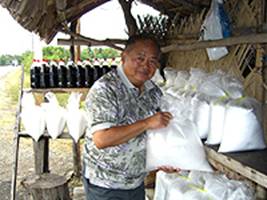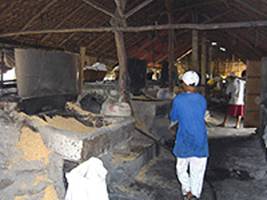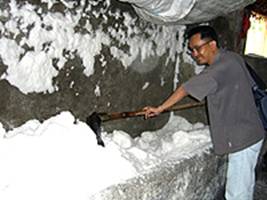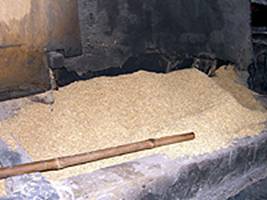"SALT
MAKING IN PASUQUIN ILOCOS NORTE "
 Along
the highway a few kilometers north of the town of Pasuquin, there are roadside
stalls selling bags of what is arguably the finest salt in the Philippines. It
is a common sight to see people riding in provincial buses that often stop at
these stalls to purchase salt. Sold by the kilo and contained in plastic bags,
the salt is cooked in large vats in huts which are usually found behind the
stalls.
Along
the highway a few kilometers north of the town of Pasuquin, there are roadside
stalls selling bags of what is arguably the finest salt in the Philippines. It
is a common sight to see people riding in provincial buses that often stop at
these stalls to purchase salt. Sold by the kilo and contained in plastic bags,
the salt is cooked in large vats in huts which are usually found behind the
stalls.
Pipes stretched from
the beach to the huts carry salt water to the cooking vats. Although the initial
cost of setting up and laying the pipes and then pumping salt water to the huts
involves a significant amount of capital for these entrepreneurs, the
convenience of having a steady supply of salt water becomes an added advantage.
This process of salt making is quite different from the way salt is produced in
the town of Paranaque (south of Metro Manila) where a thin layer of sea water is
poured over salt beds and left to dry by exposure to the sun. However, the
quality and fineness of the salt crystals made by this process does not come to
par with the salt made in Pasuquin.
The salt makers of
Pasuquin have improved their product by adding a minute amount of iodine to
plain salt to help reduce the chance of iodine deficiency, which can lead to
thyroid gland problems such as goiter. The conventional way of adding iodine to
plain salt is done by using either potassium iodide or potassium iodate.












The salt makers
of Pasuquin save on fuel by burning bags of sawdust during the cooking process.
The sawdust, which are usually waste products in lumber yards, are now sold in
sacks at minimal prices to those involved in salt making. In this cottage
industry entire families are engaged in salt making, carrying on the traditional
livelihood of previous generations. The Mendoza family of Pasuquin whose salt
making operation I had a chance to witness is just one of the many families
engaged in this cottage industry. To augment their income from selling salt,
they also sell Iloko vinegar and other crops such as garlic and onions.
 Along
the highway a few kilometers north of the town of Pasuquin, there are roadside
stalls selling bags of what is arguably the finest salt in the Philippines. It
is a common sight to see people riding in provincial buses that often stop at
these stalls to purchase salt. Sold by the kilo and contained in plastic bags,
the salt is cooked in large vats in huts which are usually found behind the
stalls.
Along
the highway a few kilometers north of the town of Pasuquin, there are roadside
stalls selling bags of what is arguably the finest salt in the Philippines. It
is a common sight to see people riding in provincial buses that often stop at
these stalls to purchase salt. Sold by the kilo and contained in plastic bags,
the salt is cooked in large vats in huts which are usually found behind the
stalls. 










